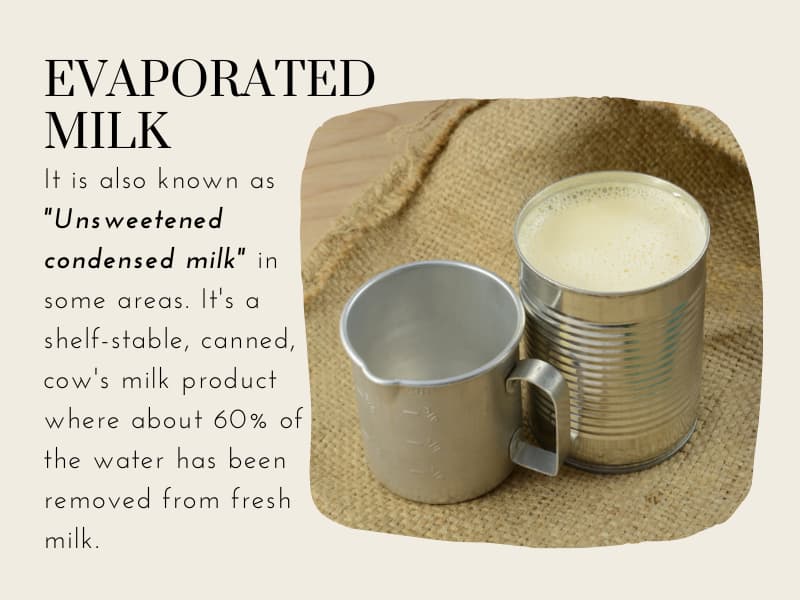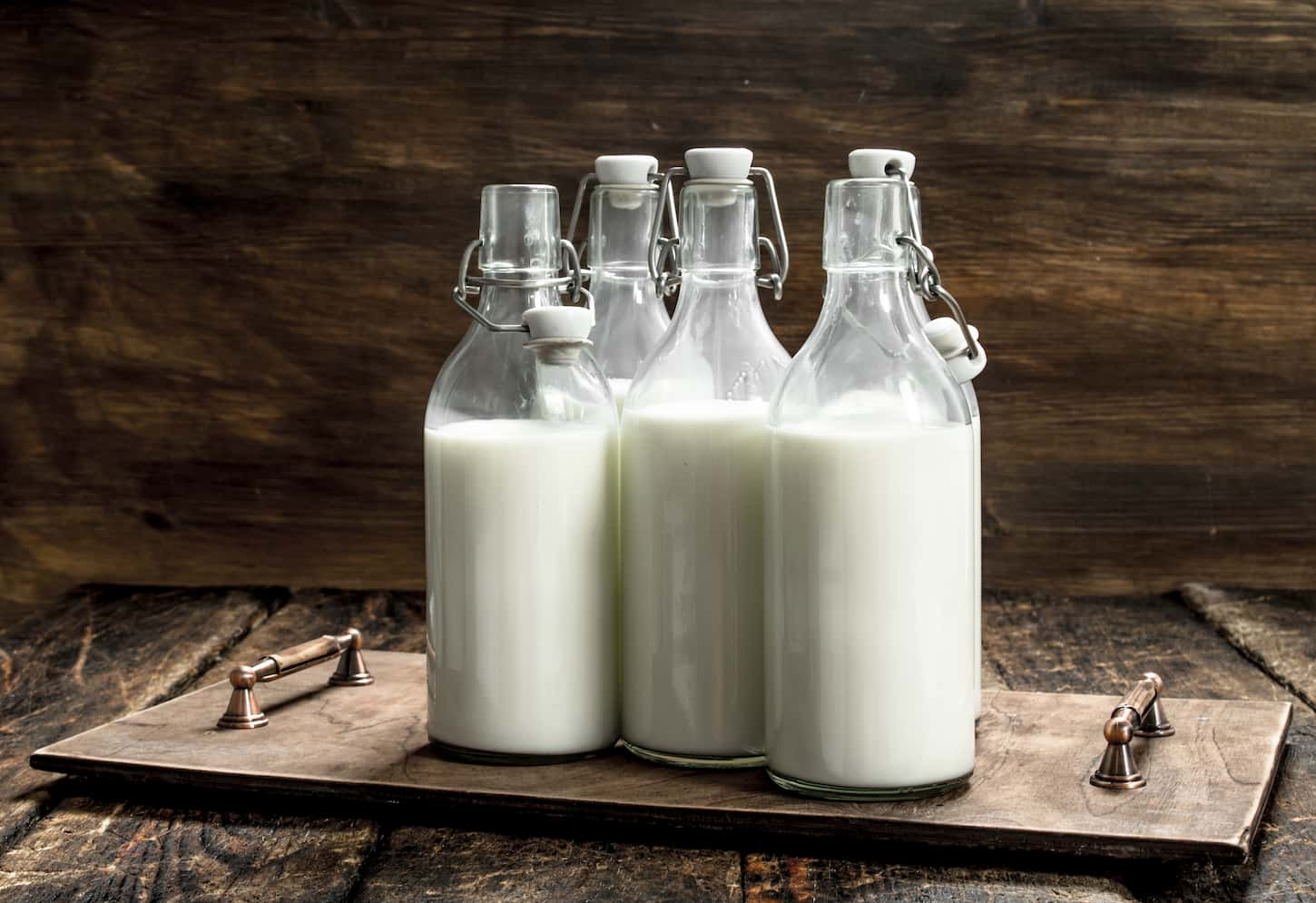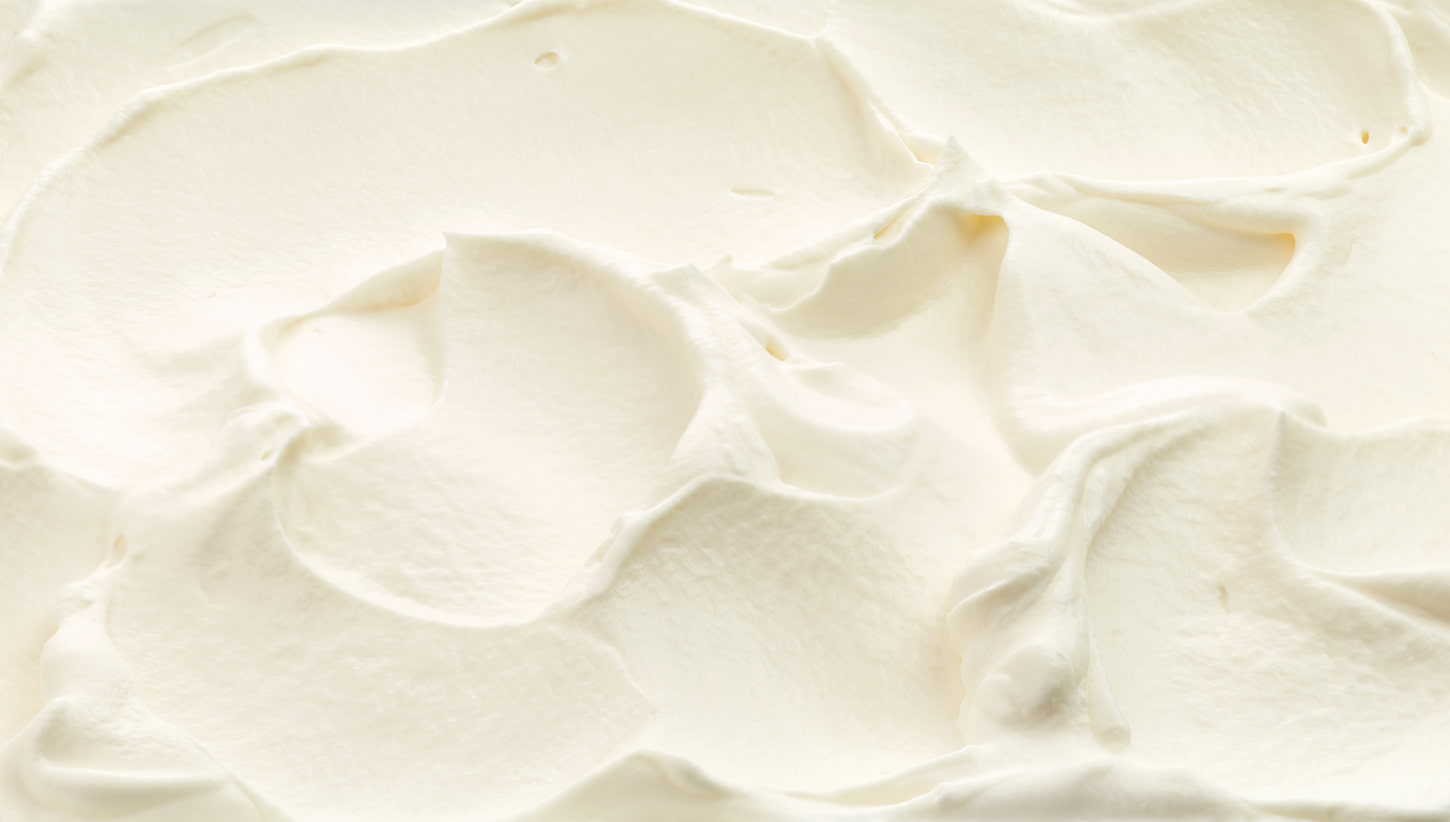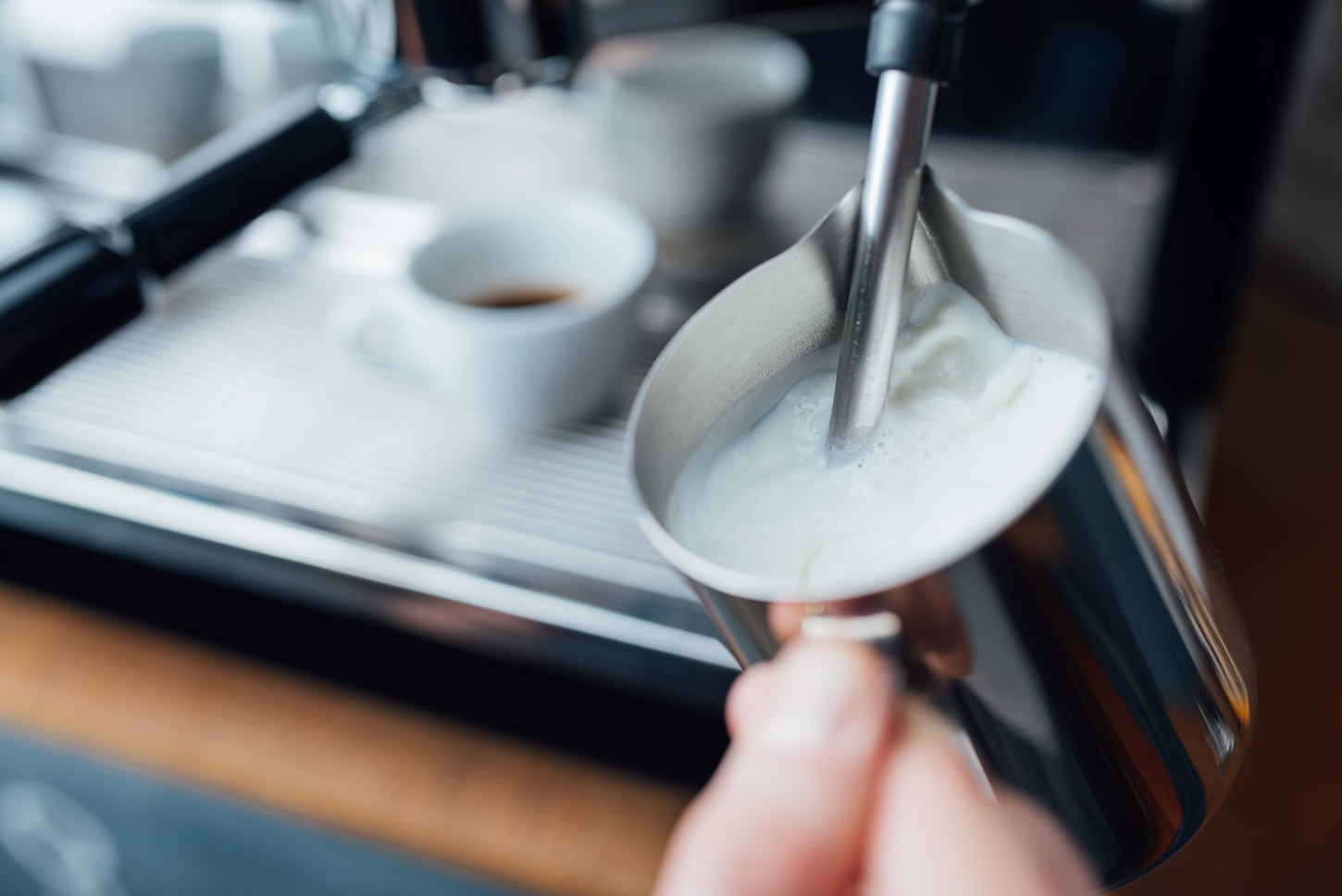Storing food properly can be a major challenge. This is especially true when it always seems like opening a can of evaporated milk means you’ve got some leftovers. What do you do with that leftover evaporated milk that you want to save and use later?
Leftover evaporated milk can be stored in the fridge, freezer, or freeze-dried for use later. Unopened evaporated milk can last up to a year, while opened cans last 5 days in the fridge, up to 3 to 6 months frozen, or up to 25 years freeze-dried.
Understanding how long evaporated milk lasts after opening and storing it properly will help to ensure the safe use of your leftovers. Keep reading, and let’s talk about all things storing evaporated milk to use later!

How Long Can You Keep Leftover Evaporated Milk?
Leftover evaporated milk can be kept refrigerated for up to 5 days after the can is opened, frozen for up to 3 to 6 months, or freeze-dried for up to 25 years. Open cans should not be kept at room temperature and should be discarded if left out for more than 2 hours to prevent food-borne illnesses.
If you’re a fan of baking or cooking, evaporated milk is probably in your pantry. Many recipes call for this creamy nectar to sweeten and thicken your dishes, but how long can you keep leftover evaporated milk?
Evaporated milk often comes in various packaging forms. Depending on how evaporated milk is packaged, and how it is stored (preferably in a dry, cool space) unopened cans or cartons can last up to 12 months or longer. If opened, this shelf-life immediately changes.
If you’re cooking and have leftover evaporated milk on hand, don’t toss it. Even opened evaporated milk can last up to five days if properly stored. If you have leftover evaporated milk that needs storing, doing so properly can drastically affect how long it will last before going bad!
How Do You Store Evaporated Milk After Opening?
The best way to store evaporated milk after opening is by pouring it into an airtight container, removing as much air as possible, closing the container, and putting it into the fridge immediately. For longer storage, prepare the leftover milk appropriately and put it away as soon as possible.
When you’re preparing something delicious, the last thing on your mind is how to store your leftovers. However, properly storing your evaporated milk after being opened is crucial to ensure the safe use of excess milk for future recipes.
Experts suggest storing your evaporated milk in an airtight container and refrigerating immediately after initially opening the can or container. Immediacy is key! Leaving open evaporated milk on the counter for hours before properly storing is not suggested.
Once you have opened your evaporated milk and portioned out the amount needed for your recipe, immediately transfer the remaining contents to an airtight container—any form of plastic or glass container should work—and place it into your refrigerator.
If you’re not planning to use the remaining evaporated milk right away, it may be worth considering freezing the remaining portions.
Can You Freeze Unused Evaporated Milk?
Unused evaporated milk can be frozen in an air-tight container, but extra care must be taken so the milk doesn’t separate when frozen or thawed. Wrap the freezer-safe, air-tight container with cling wrap to ensure no moisture enters or is released, which causes the milk to separate while freezing.
Maybe you don’t need to use that leftover evaporated milk right away? Rather than force yourself to use it, you may think about freezing it.
Though you can freeze evaporated milk, simply throwing it in the freezer won’t do. Some steps must be taken to guarantee the structure of the evaporated milk. Since improperly freezing evaporated milk can separate the milk solids and liquids, ensuring you freeze your leftover milk properly is crucial to ensuring it maintains its form and is available for proper use once thawed.
Whether you’re freezing unopened or recently opened containers of evaporated milk, the contents should be removed from their original container and placed into a freezer-friendly container.
Freezer-friendly containers include any airtight, sealable container. For best results, we suggest first wrapping the container in cling wrap before sealing with the airtight top to ensure no moisture is released or enters the container. This is crucial to ensure the evaporated milk maintains its form and doesn’t separate.
How Long Can Evaporated Milk Be Frozen?
Evaporated milk can be safely frozen and stored for 3 to 6 months in an air-tight container. Frozen evaporated milk may separate or have some textural changes when frozen, depending on how it was stored.
While opened and refrigerated evaporated milk may last up to five days. What if you have opened a can and don’t have a use for it in the immediate future?
Don’t fret! Freezing evaporated milk is not only easy but can help it last much longer. By freezing your opened evaporated milk, you can declutter your pantry and store your leftovers for up to three months or longer!
To ensure your evaporated milk lasts, you must:
- Store in a freezer-safe container
- Ensure there are no gaps, cracks, or breaks in the storage container that can let in moisture.
- Ensure the milk remains frozen at zero-degrees Fahrenheit the entire time it’s stored
If you follow these steps, frozen evaporated milk can theoretically last forever until thawed. However, for best results, try to use it within three to six months.
Pro tip: evaporated milk won’t taste good if it gets freezer-burned from being stored improperly or for too long. It also won’t taste right if it absorbs other smells and tastes from foods in your freezer.
Can You Freeze Evaporated Milk In Ice Cube Trays?
Evaporated milk can be frozen in ice cube trays. For best results, pour evaporated milk into a silicone ice tray, cover in cling or plastic wrap, and then cover again with a freezer-safe, airtight container. Frozen milk cubes can be moved to a new air-tight, freezer-safe container as needed.
One of the best methods to freeze evaporated milk is in ice cube trays. This approach makes it easy to portion out your remaining milk and use it sparingly as needed!
Though it may be tempting to simply fill up your ice-cube tray with your leftover milk and pop it in the fridge, to ensure the milk doesn’t separate, you’ll still need to store the filled ice-cube tray in another freezer-safe container.
If left open and unsealed (as you would for regular ice cubes) the milk will separate and freeze in two separate forms. This may affect the quality and edibility of the evaporated milk for later use.
For best results, pour evaporated milk into a silicone ice tray, cover in cling or plastic wrap, and then cover again with a freezer-safe, airtight container. When ready for use, pop open the container, take a cube or two, and reseal for easy access!
If you find yourself with a lot of evaporated milk that needs to be frozen (or you just need the silicone ice tray later), go ahead and move the evaporated milk cubes into a new air-tight, freezer-safe container.
Double-wrap it to be safe, then put it into deep freeze until you need it. Just don’t forget to label it!

Can I Freeze Food With Evaporated Milk In It?
Evaporated milk, as part of a dish or food, can generally be frozen just fine, while some dishes with evaporated milk in them won’t freeze as well. When in doubt, freeze ingredients separately to ensure the best quality and prepare the meal as freshly as possible.
What if you’ve already mixed food with evaporated milk. Can it still be frozen and stored for later?
Absolutely! Like freezing any food, each ingredient will have a different effect on the quality of the leftovers when unsealed. Foods that tend to not freeze well are cooked eggs, certain soups, fried foods, and cooked starches like pasta or potatoes.
Since some foods freeze better than others, research which foods may affect the quality of the overall product. Many recipes that call for evaporated milk will freeze just fine, while others may not keep well. If in doubt, freeze ingredients separately to ensure the best quality.
Continue to use best practices when freezing anything with evaporated milk. Make sure they’re stored in freezer-safe containers, are maintained at a freezing temperature level, and ensure no outside moisture or food comes into contact with your leftover food.
Can You Freeze-Dry Evaporated Milk?
Evaporated milk can be freeze-dried and stored for up to 25 years in a Mylar bag with an oxygen absorber, provided the Mylar bag is sealed well and is stored in a cool, dark place.
If you’re hoping to keep evaporated milk in a different form or need more freezer space, freeze-drying may be the solution. Though not easy, freeze-drying dairy products, including evaporated milk, can be done to further preserve your milk.
Freeze-drying your evaporated milk is a more time-intensive process and does require a freeze-dryer appliance, which many may not have handy in their kitchen. Unless you have a specific reason to freeze dry your stored milk, simply freezing should likely do the trick.
But hey – we’re here to make sure we’re prepared, right? So, let’s freeze-dry that extra evaporated milk!
If you do want to freeze dry your evaporated milk, and you have access to a freeze-dryer, there are some very important steps to take to ensure the final product is exactly what you’re after.
But first, you have to decide if you like pre-freezing your foods to prepare them.
Pro tip: I recommend pre-freezing foods before freeze-drying them. Pre-freezing foods will free up valuable freeze-dryer time and prevent a lot of issues related to foods being kept too warm (room temperature) while the freeze-dryer is starting to get ready. Pre-freezing liquids also ensure you don’t spill them during the freeze-drying process.
Here’s how you freeze-dry evaporated milk if you’re willing to pre-freeze, it and prevent a lot of issues with spilling liquids.
- Freeze the evaporated milk into silicone ice trays that are wrapped with cling wrap and covered in an air-tight, freezer-safe container. Make sure the frozen cubes aren’t more than about an inch deep, though half an inch is better. Freeze well.
- Start your freeze dryer and wait until it’s on a cold cycle. When this happens will depend on your model and the software edition you’ve got. For us (we have an older model), that’s at -80 degrees Fahrenheit.
- Move the frozen milk cubes onto the freeze-dryer trays. Store it in the freezer until the freeze-dryer is ready. Move the trays into the freeze-dryer.
- After this, the machine does most of the work! In 24 to 36 hours, you’ll have freeze-dried evaporated milk.
- Once done, crumble or store the freeze-dried milk any way you like! I like to crumble it. Roll it out with a rolling pin in a Ziploc bag before you put it in the Mylar bags. It’s the easier way, trust me.
If you don’t want to pre-freeze the evaporated milk, here are the steps to follow.
- Empty the evaporated milk into a tray no deeper than about a half-inch or half of a normal tray’s depth. Be super careful, because you’re likely going to spill (it happens even to those of us with a lot of experience).
- Slide your tray into your freeze dryer and select the freeze selection. This ensures that the evaporated milk is first frozen before being dried.
- After this, the machine does most of the work! Give it about 24 hours on average for the machine to produce a tray of freeze-dried evaporated milk.
- Once done, you can crumble or store the freeze-dried milk any way you like! Though a more time-intensive process and potentially more costly due to the additional appliances used, freeze-dried milk can last up to 25 years while maintaining 90-95% of the original nutritional value!
Once you’re ready to use your freeze-dried evaporated milk, simply reconstitute it with about a 1:1 water to milk powder ratio and stir!

Can Evaporated Milk Be Whipped?
Evaporated milk can be whipped, and it has a creamy, beautiful texture once whipped. Whipping evaporated milk takes about 3 minutes total, though it does taste better with some added powdered sugar and vanilla.
Now that you know how to properly store your evaporated milk, what do we do with it once we’re ready to cook again?
One of my favorite ways to use evaporated milk is by whipping this delicious ingredient! Evaporated milk already comes in a beautiful, creamy texture. When whipped, that gorgeous texture holds nicely while producing a lighter, whipped creaminess.
Since evaporated milk doesn’t have as much liquid, the whipping process is quick and easy.
For best results, have powdered sugar and a touch of vanilla on hand.
To start, beat the evaporated milk for about one minute or until it’s frothy. At this point, add in your sugar and vanilla extract and continue to beat for about two additional minutes. At this point, your mixture should be a nice, firm, whipped texture that works great over fresh fruit, pie, or any sweets.
I hear it tastes great on a coffee, though I’m more of a hot chocolate kind of girl myself. Even so, it goes great on that!
As an additional tip, to help keep your whipped evaporated milk hold its structure for a bit longer, add a pinch of gelatin mix and freeze it for about thirty minutes before whipping to help keep its delicious texture for longer!
The result should be a beautiful, rich, semi-light, whipped cream-like topping that you’ll have a hard time not devouring right out of the mixing bowl!

Next Steps
Now that you know more about storing evaporated milk, it’s so much easier to keep it on hand and use it in recipes. It really is delicious, though I’ll be honest: I love turning it into dulce de leche. And that’s a whole other process for another time.
In any case, now that you know more about evaporated milk, make sure you go read this article next: How Long Can Water Be Stored? Complete Guide. That way, you’ll have the basics covered in any emergency or situation!
Or, if you want to read more about adding fresh milk to your backyard homestead, make sure you check out this article I wrote on Easy Guide: How To Milk A Goat With A Breast Pump. That way, you can get fresh milk without getting sore wrists.
Resources
Learning from your own experience is essential, but learning from others is also intelligent. These are the sources used in this article and our research to be more informed as homesteaders.
- Alusa, Amy. “Whipped Evaporated Milk.” Just A Pinch Recipes, www.justapinch.com/recipes/dessert/cake/whipped-evaporated-milk.html. Accessed 8 Feb. 2022.
- Thomas, Carolyn. “How to Freeze Milk (Or Freeze-Dry Milk).” Homesteading Family, 10 Jan. 2022, homesteadingfamily.com/how-to-freeze-milk.
